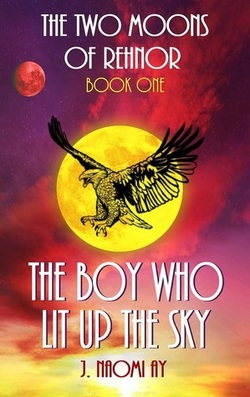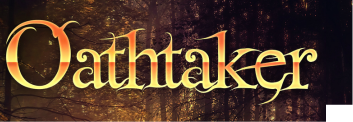
* *
I received a copy of this book in exchange for my review through Goodreads' READ IT AND REAP program. I thank the author for this opportunity.
For me, this story was—odd. I’m not sure exactly why that word summarizes it best for me, but when I try to think of descriptive words for the story, it is the word that comes to mind again and again. I find I am confused by the world created between the covers of THE BOY WHO LIT UP THE SKY. The people and social norms suggest that the world is ancient and pre-industrial, but the gadgets and technologies are anything but. Thus, I pictured thirteenth century people in a twenty-first century world, and somehow, it did not work well for me. Things from just the first few pages that suggested an old world included the orphan home and the way it was run, the power of the Father, the infants’ loss of their parents during the “winter freeze,” use of words such as “half-breed” and “milord,” the “one year olds’ room” where “twenty babies sat naked in chairs, eating, sleeping and pooping at will,” the reference to orphan girls who “unless they were rescued before age seven or eight, would be put to work earning their keep,” the fact that there were only jobs for “men who joined the guards and women who worked as maids in the Palace,” the loss of babies from “a fever going around,” the off-handed manner in which a child sexual predator was introduced, and so forth. I could picture these things in a world very different from the world of today. Even so, these same early pages occasionally noted things like a bottle warmer, the Father’s new “speeder,” old radiators that “spat and hissed,” and a note that no busses serviced a particular area. I grant that a fantasy world can be anything. I just found that for me this one was—not believable—it was—odd.
The main character, Senya, also known later as Sehron, is I believe, intended to be a sympathetic character. In fact, I found that I quite disliked him. Perhaps this was because I couldn’t quite capture his spirit. As an infant, he did magic and unexplainable things, then after escaping the orphanage, became a street waif that was always and forever found with a cigarette between his lips and with a chip on his shoulder. He was a bully and a murderer. In short, I found no redeeming value about his person. Also, I must say that while his eyes shone silver from the outset, it was some time before I discovered that Senya was in fact blind, and that he only saw through the eyes of others. Perhaps I had I missed something along the way. . . ?
Each chapter is told through the eyes of a different character. Here is where the author excelled—that is, the author showed a keen ability to take on different personalities. However, it may have been this approach that also worked against providing continuity to the story—continuity that may have helped me to identify more readily with Senya.
Perhaps my biggest issue with THE BOY WHO LIT UP THE SKY was the manner in which women were portrayed. With the exception of Meri who summoned the courage to escape a violent and predatory environment, the women were all superficial and silly. They complained about not trusting Senya with their children, but did not do what any mother I know would do—remove their children from the potential harm. Of course, it may be that this was due to their subservient role in this medieval land but as noted above, this was not a medieval land—at least not technologically speaking. Most keenly, I noted that the men spoke of their women solely as those who handled domestic chores. Thus, the men referenced whether someone’s wife could cook or not (“Perhaps he just doesn’t like your wife’s cooking. I’m not sure I do either.”), and made such comments to their own wives, as: “Have you not enough tasks to keep you busy such as tending your baby and cleaning this house?” or “. . . this is my house.” Without genuine or realistic women characters, the story fell flat for me.
I also note that there are some editing errors. Some are merely grammatical and there is the use of both “smart” and “dumb” quotation marks at the same time. There also are instances where the incorrect word was used, such as “wretched” for “retched.”
All that said, THE BOY WHO LIT UP THE SKY does deliver a “new” fantasy world for those readers looking for the same.
For more information about this book and author, see here.
I received a copy of this book in exchange for my review through Goodreads' READ IT AND REAP program. I thank the author for this opportunity.
For me, this story was—odd. I’m not sure exactly why that word summarizes it best for me, but when I try to think of descriptive words for the story, it is the word that comes to mind again and again. I find I am confused by the world created between the covers of THE BOY WHO LIT UP THE SKY. The people and social norms suggest that the world is ancient and pre-industrial, but the gadgets and technologies are anything but. Thus, I pictured thirteenth century people in a twenty-first century world, and somehow, it did not work well for me. Things from just the first few pages that suggested an old world included the orphan home and the way it was run, the power of the Father, the infants’ loss of their parents during the “winter freeze,” use of words such as “half-breed” and “milord,” the “one year olds’ room” where “twenty babies sat naked in chairs, eating, sleeping and pooping at will,” the reference to orphan girls who “unless they were rescued before age seven or eight, would be put to work earning their keep,” the fact that there were only jobs for “men who joined the guards and women who worked as maids in the Palace,” the loss of babies from “a fever going around,” the off-handed manner in which a child sexual predator was introduced, and so forth. I could picture these things in a world very different from the world of today. Even so, these same early pages occasionally noted things like a bottle warmer, the Father’s new “speeder,” old radiators that “spat and hissed,” and a note that no busses serviced a particular area. I grant that a fantasy world can be anything. I just found that for me this one was—not believable—it was—odd.
The main character, Senya, also known later as Sehron, is I believe, intended to be a sympathetic character. In fact, I found that I quite disliked him. Perhaps this was because I couldn’t quite capture his spirit. As an infant, he did magic and unexplainable things, then after escaping the orphanage, became a street waif that was always and forever found with a cigarette between his lips and with a chip on his shoulder. He was a bully and a murderer. In short, I found no redeeming value about his person. Also, I must say that while his eyes shone silver from the outset, it was some time before I discovered that Senya was in fact blind, and that he only saw through the eyes of others. Perhaps I had I missed something along the way. . . ?
Each chapter is told through the eyes of a different character. Here is where the author excelled—that is, the author showed a keen ability to take on different personalities. However, it may have been this approach that also worked against providing continuity to the story—continuity that may have helped me to identify more readily with Senya.
Perhaps my biggest issue with THE BOY WHO LIT UP THE SKY was the manner in which women were portrayed. With the exception of Meri who summoned the courage to escape a violent and predatory environment, the women were all superficial and silly. They complained about not trusting Senya with their children, but did not do what any mother I know would do—remove their children from the potential harm. Of course, it may be that this was due to their subservient role in this medieval land but as noted above, this was not a medieval land—at least not technologically speaking. Most keenly, I noted that the men spoke of their women solely as those who handled domestic chores. Thus, the men referenced whether someone’s wife could cook or not (“Perhaps he just doesn’t like your wife’s cooking. I’m not sure I do either.”), and made such comments to their own wives, as: “Have you not enough tasks to keep you busy such as tending your baby and cleaning this house?” or “. . . this is my house.” Without genuine or realistic women characters, the story fell flat for me.
I also note that there are some editing errors. Some are merely grammatical and there is the use of both “smart” and “dumb” quotation marks at the same time. There also are instances where the incorrect word was used, such as “wretched” for “retched.”
All that said, THE BOY WHO LIT UP THE SKY does deliver a “new” fantasy world for those readers looking for the same.
For more information about this book and author, see here.


